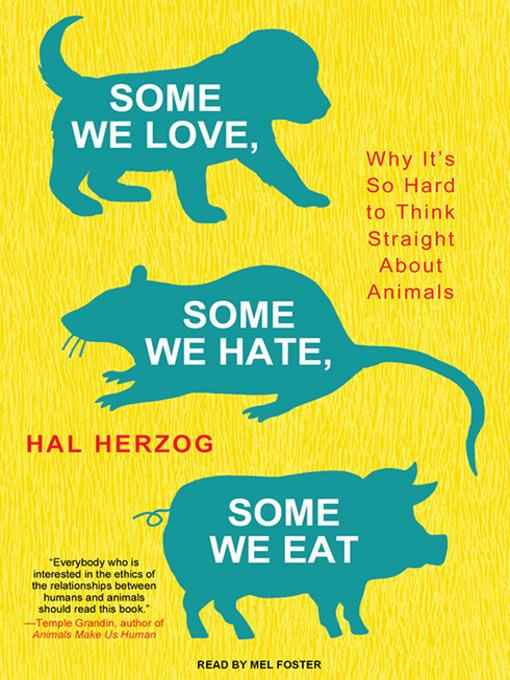
Some We Love, Some We Hate, Some We Eat
Why It's So Hard to Think Straight About Animals
کتاب های مرتبط
- اطلاعات
- نقد و بررسی
- دیدگاه کاربران
نقد و بررسی

Hal Herzog is a friendly anthrozoologist--a person who studies human-animal relationships. He presents listeners with a fascinating look at the inconsistencies and hypocrisies that humans have when it comes to animals. Why do we love kittens but hate snakes? Why do so many people oppose cockfighting but eat factory-farmed chicken? How many mice should we sacrifice to discover a cure for dengue fever? For baldness? Mel Foster adeptly translates Herzog's whimsical tone, complete with wondrous and gee-whiz reactions. But Herzog is serious too, and Foster unfailingly holds the listeners' attention through accounts of multiple research studies. Foster doesn't do accents well, and trying to imitate Chris Rock is definitely a mistake, but these are minor irritations in an entertaining performance. A.B. (c) AudioFile 2010, Portland, Maine

July 26, 2010
How rational are we in our relationship with animals? A puppy, after all, is "a family member in Kansas, a pariah in Kenya, and lunch in Korea". An animal behaviorist turned one of the world's foremost authorities on human-animal relations, Herzog shows us, in this readable study, how whimsical our attitudes can be. Why do we like some animals but not others? One answer seems to be that babylike features like big eyes bring out our parental and protective urges. (PETA has started a campaign against fishing called "Save the Sea Kittens)." Research has shown that the human brain is wired to think about animals and inanimate objects differently, and Herzog reveals how we can look at the exact same animal very differently given its context—most Americans regard cockfighting as cruel but think nothing of eating chicken, when in reality gamecocks are treated very well when they are not fighting, and most poultry headed for the table lead short, miserable lives and are killed quite painfully. An intelligent and amusing book that invites us to think deeply about how we define—and where we limit—our empathy for animals.

























دیدگاه کاربران